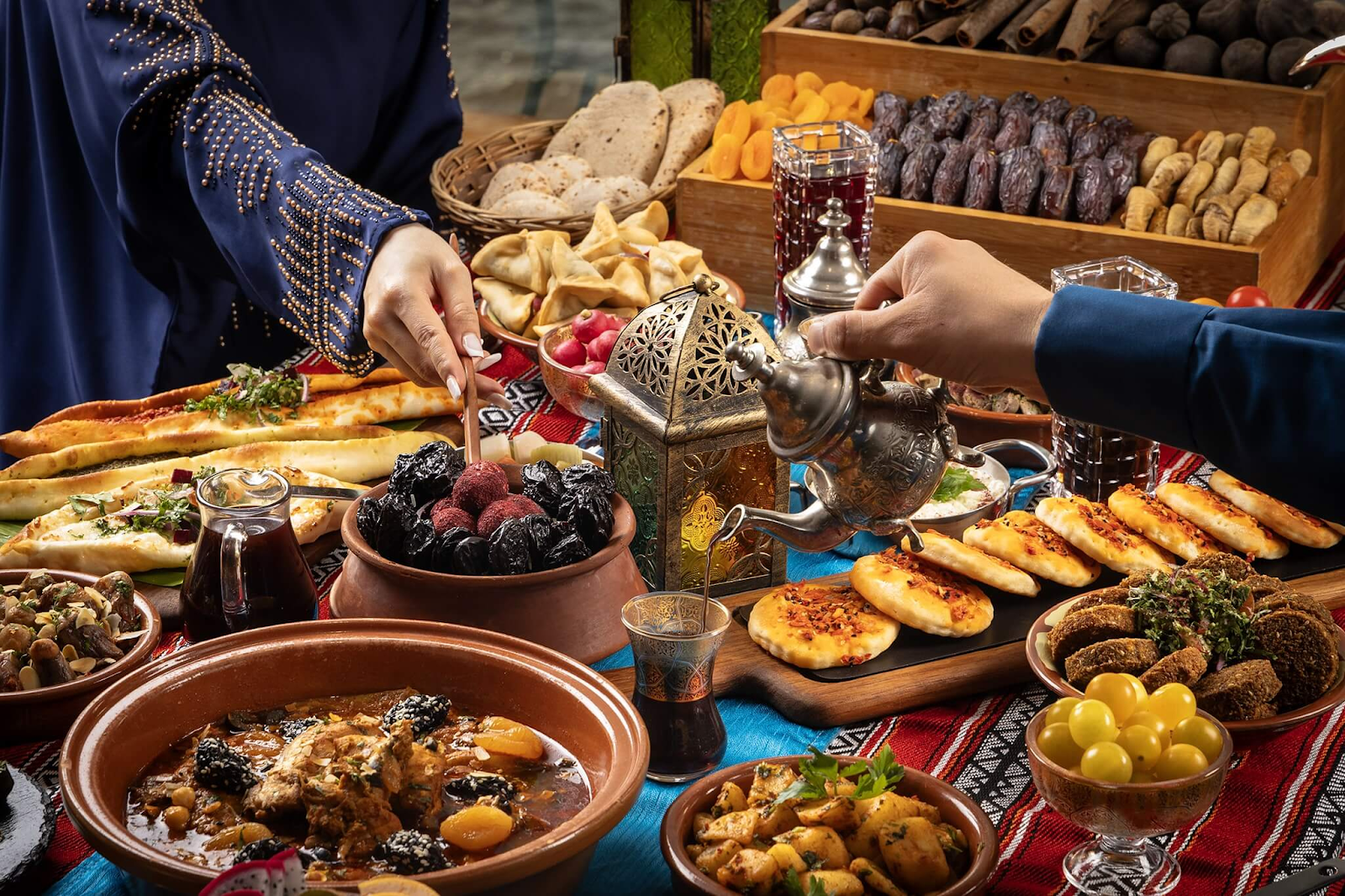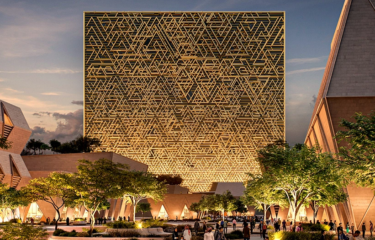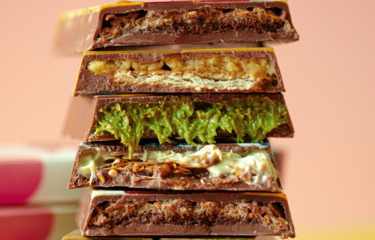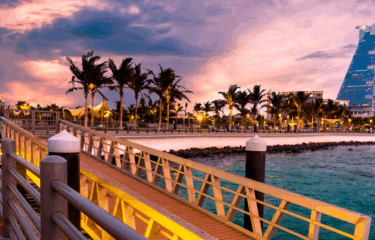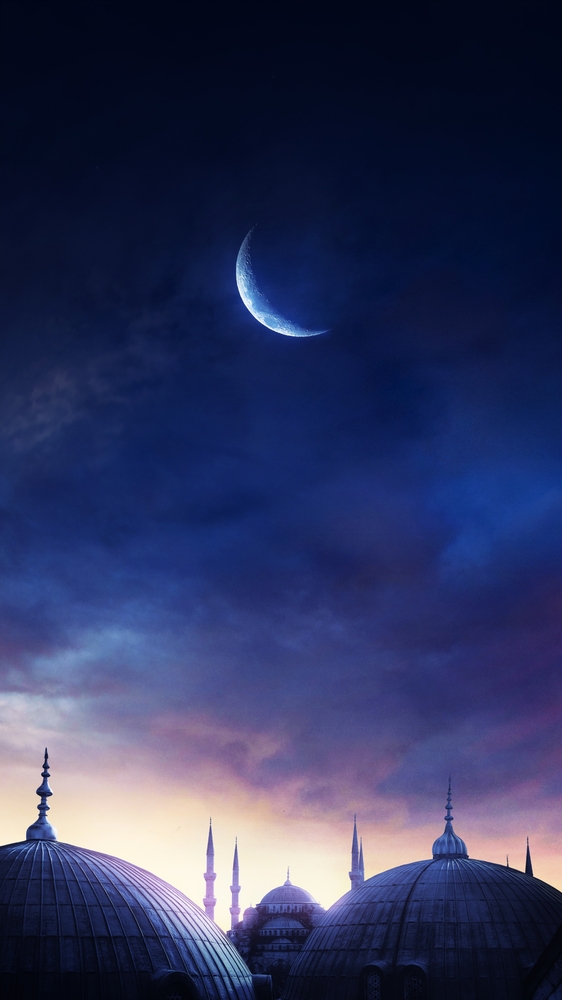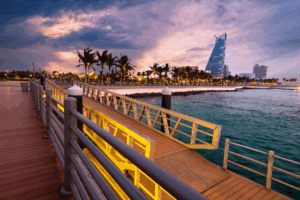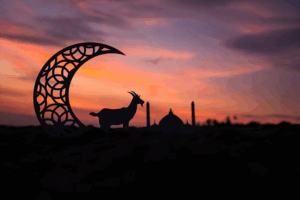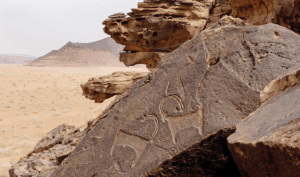You’ll find that Ramadan in Saudi Arabia is much more than a religious observance; it’s an immersive journey into the heart of Islamic tradition and Arabian hospitality.
Celebrated by millions around the world, Ramadan is the ninth month of the Islamic lunar calendar, a time for fasting from dawn until sunset, spiritual reflection, and increased devotion. During this month, Muslims believe the Quran was first revealed to the Prophet Muhammad, making it a sacred time of prayer, charity, and unity.
As you walk through bustling souks, hear the rhythmic calls to prayer, and join locals in breaking the fast at sunset, you’ll discover why Saudi Arabia holds a unique place during this sacred month. From community gatherings to night prayers under starlit skies, Ramadan here is an unforgettable experience.
Illuminating Homes with Ramadan Traditions in Saudi Arabia
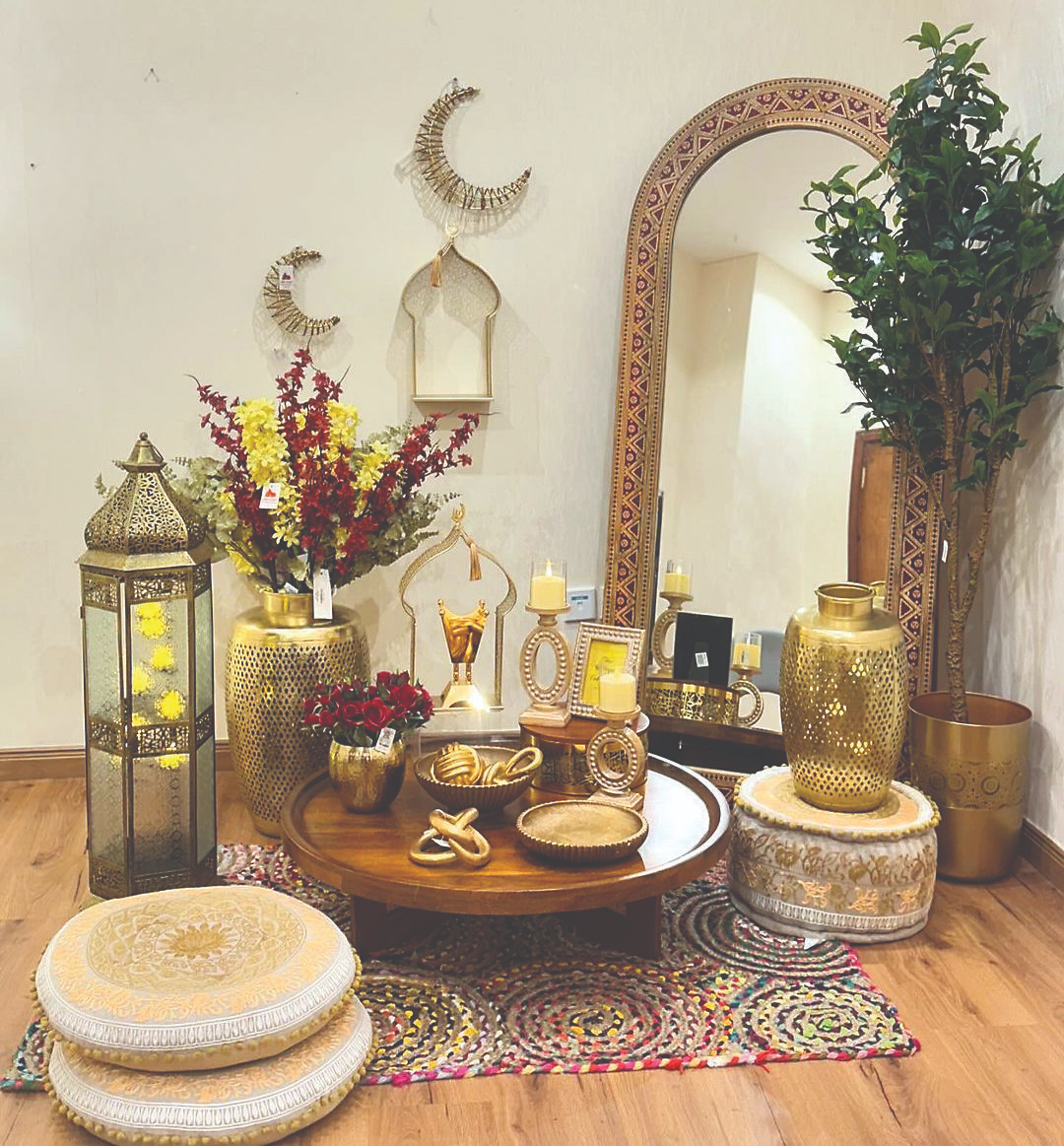
As the month of Ramadan approaches, homes across Saudi Arabia begin to transform into displays of light and beauty. The glow of vibrant lanterns, the twinkle of fairy lights, and intricate Islamic patterns adorning walls and windows create a sense of magic in the air. This is not just about decoration—it’s a heartfelt preparation for a month of faith, family, and tradition.
Families gather to bring their homes to life, carefully placing crescent-shaped lights on balconies and arranging tables with special Ramadan tableware. Stores like IKEA, Home Centre, and local markets brim with seasonal essentials, offering everything from ornate lanterns to elegant serving dishes designed for hosting Iftar gatherings. Browsing these bustling shops is an experience in itself, as you see the joy and anticipation of locals preparing for the holy month.
Even the streets come alive. Public squares and marketplaces shimmer with decorations that create an atmosphere of celebration and unity. As you explore, you’ll feel the energy and excitement building, that highlight the shared values that make Ramadan so special in Saudi Arabia.
Pro tip: Visiting during the preparation days? It’s the perfect time to pick up unique lanterns and tableware as souvenirs.
Savoring the Flavors of Ramadan Markets in Saudi Arabia
In the lead-up to Ramadan, markets across Saudi Arabia become a feast for the senses. You’ll hear the lively chatter of families preparing for the holy month, see colorful stalls overflowing with fresh produce and spices, and smell the irresistible aroma of dates, herbs, and freshly ground coffee. These bustling markets are at the heart of Ramadan traditions in Saudi Arabia, where the month’s food story begins.
As you wander through the aisles, you’ll find ingredients for beloved dishes like samboosa, golden pockets filled with spiced meat or vegetables; harees, a creamy porridge made from wheat and meat; and luqaimat, sweet, crunchy dumplings drizzled with date syrup. Vendors display rows of premium dates, a staple for breaking the fast, with varieties ranging from the soft, caramel-like Ajwa to the chewy, nutty Sukkary.
The atmosphere is welcoming, and it’s not uncommon for vendors to offer you samples of their goods. Sip on tamarind juice or try qamar al-deen, a sweet apricot drink, both iconic refreshments of Ramadan evenings.
Tip: Visit these markets in the late afternoon for the most vibrant experience. This is when families are busy preparing for Iftar, and the energy is infectious. If you’re not fasting, consider buying some dates or luqaimat to share with locals—they’ll appreciate the gesture and may even invite you to join their Iftar.
Exploring these markets immerses you in the flavors and spirit of Ramadan, giving you a taste—literally—of Saudi Arabia’s rich food traditions.
Breaking Fast with Locals at Iftar
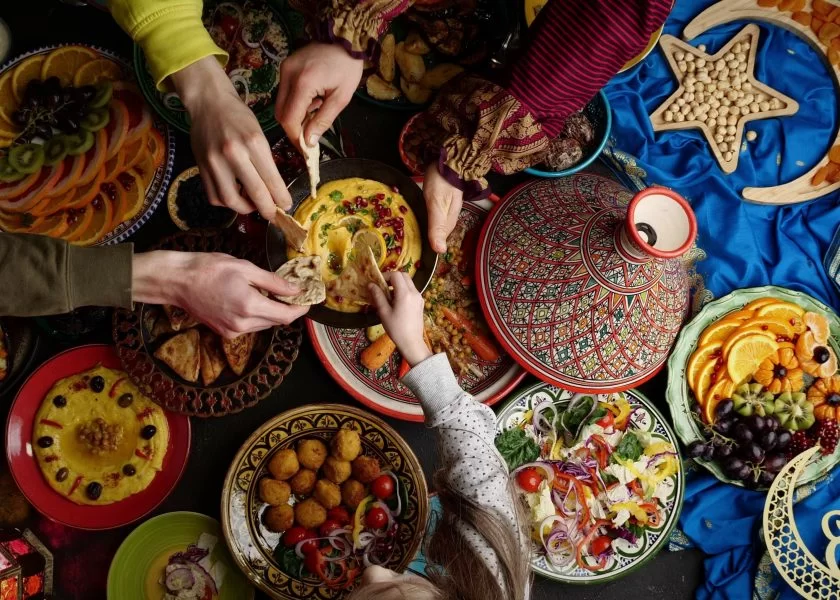
As the call to prayer echoes through the air, marking the end of the day’s fast, a wave of anticipation sweeps across Saudi Arabia. You’ll experience the deep sense of unity that defines Iftar, the evening meal where family, friends, and even strangers come together to break their fast. Homes, mosques, and even streets are transformed into vibrant gathering places, as everyone eagerly waits to enjoy the first bite of food after a long day of fasting.
You will find yourself sitting at a table, surrounded by the warmth of those around you. The table is laden with dates along with steaming bowls of soup, fragrant kabsa (a spiced rice dish with meat), and freshly baked bread. The air is filled with the sounds of laughter and conversation, as everyone shares stories and experiences.
If you’re lucky, you might receive an invitation to join a local family for Iftar. Hospitality is at the heart of Saudi culture, and during Ramadan, it reaches its peak. If the locals offer you a seat at the table, don’t hesitate — say yes. It’s a chance not only to taste incredible food but also to connect with locals and share in the spirit of the season.
Tip: If you’re visiting during Ramadan and are invited to a local home, bring a small gift like a box of sweets or dates as a gesture of appreciation. They will welcome you with open arms, and the experience will become one of the highlights of your trip. Even if you don’t speak the language, the shared joy and hospitality will make you feel right at home.
The Serenity of Taraweeh Prayers
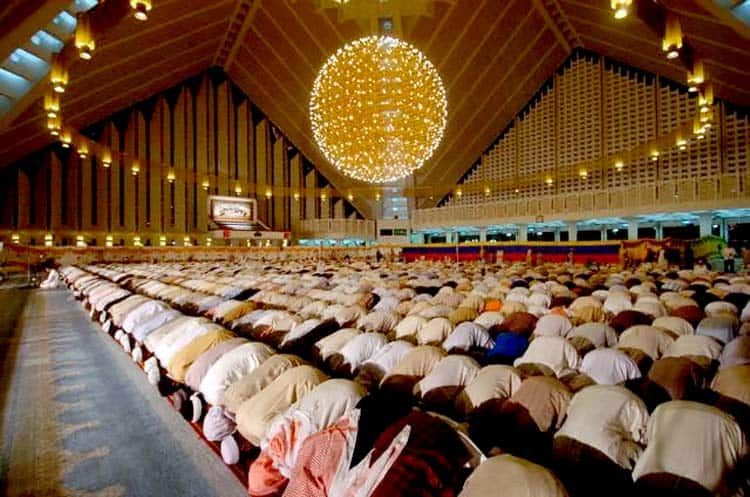
When the day winds down, you’ll notice a serene rhythm in the air as people head to mosques for Taraweeh prayers. These are special nightly prayers performed after the Isha prayer, designed to offer Muslims a chance to reflect on their faith and build a closer connection to God. Each night during Ramadan, a portion of the Quran is recited during Taraweeh, culminating in the completion of the entire Quran by the end of the month.
If you’re in Saudi Arabia, you’ll see mosques illuminated and filled with worshippers, their voices harmonizing in recitation. The Grand Mosque in Mecca and the Prophet’s Mosque in Medina are particularly awe-inspiring during this time, with thousands praying in unison under the glow of golden lights and the vast open sky. These prayers foster a profound sense of community and spiritual peace.
For those unfamiliar, Taraweeh involves a series of prayer cycles called rak’ahs, with breaks for rest and reflection. Depending on the mosque, these prayers can last an hour or more, but worshippers are welcome to stay for as long as they wish.
Tip for visitors: As a visitor, even if you don’t participate in the prayers, simply observing them can be a moving experience. Non-Muslims can also still visit mosques during this time in some areas. Be sure to dress modestly and follow local customs to fully respect the sanctity of these gatherings.
Generosity That Warms the Soul
During Ramadan, you’ll witness an outpouring of generosity that is deeply woven into the Ramadan traditions in Saudi Arabia. Zakah, an obligatory form of charity in Islam, holds even greater significance during this holy month. Muslims are encouraged to give a portion of their wealth to those in need, embodying the values of compassion, equity, and social responsibility.
As you explore Saudi Arabia during Ramadan, you’ll see these principles in action. Community-driven initiatives like Iftar tents are set up across cities and towns, offering free meals to ensure no one breaks their fast hungry.
Beyond Zakah, many Saudis also practice Sadaqah, voluntary acts of charity, which further enrich the spirit of giving. You’ll find people distributing food packages, funding medical care, or donating clothes to families in need. This collective effort showcases the depth of generosity that Ramadan inspires in Saudi Arabia, making it one of the most heartwarming aspects of the month.
As a visitor, you’re not just an observer—you can become part of this culture of giving. Organizations and mosques often welcome volunteers to help with meal distributions or community events. It’s a wonderful way to connect with locals, share in the spirit of Ramadan, and truly appreciate the kindness that defines this time of year.
Night Prayers and Spiritual Reflection
The last ten nights of Ramadan carry a profound sense of spirituality, with Qiyam al-Layl, or the Night Prayers, standing as a highlight of devotion. Observed during the late hours of the night, these prayers are a time for deep reflection and connection with God. Muslims dedicate these moments to seeking forgiveness, expressing gratitude, and making heartfelt supplications, hoping to earn the blessings of Laylat al-Qadr, the Night of Power.
Laylat al-Qadr, believed to fall within these final ten nights, holds immense significance as the night the Quran was first revealed to Prophet Muhammad. Worshippers gather in mosques or pray at home, performing extra rak’ahs (prayer units) and reciting verses from the Quran. The stillness of the night amplifies the sense of closeness to God, making Qiyam al-Layl a deeply moving experience.
In Mecca and Medina, the atmosphere is unparalleled. Millions of pilgrims fill the Grand Mosque and the Prophet’s Mosque. Even if you’re outside these cities, you’ll feel the collective devotion as mosques remain open and vibrant well into the night. The streets are alive with worshippers, families shopping for Eid, and shops serving refreshments for those observing the late-night prayers.
Even if you’re not familiar with the rituals, observing Qiyam al-Layl will give you a profound appreciation for the spiritual discipline and unwavering faith that define the Ramadan experience.
Insider Tip: Be sure to wear comfortable attire, as the prayers can be lengthy, and bring water or snacks if you plan to stay out late.
A Joyful Finale in the form of Eid
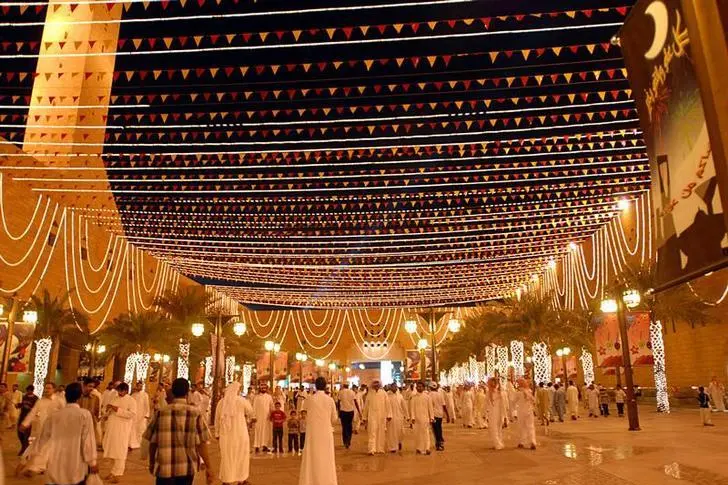
When Ramadan ends, the joy and celebration of Eid al-Fitr burst into life across Saudi Arabia. The festival begins with early morning Eid prayers, held in mosques and open-air spaces adorned with festive decorations. As you walk through these gatherings, you’ll see Muslims dressed in their finest attire.
After prayers, the celebrations continue with vibrant family gatherings. Homes are filled with the aroma of traditional dishes and sweets like maamoul, buttery cookies stuffed with dates or nuts, balaleet, a sweet and savory vermicelli dish and, luqaimat. Guests are welcomed with Arabic coffee and platters of dates, creating a warm and inviting atmosphere.
Children are at the heart of Eid festivities. Families shower them with Eidiya or Eidi, small sums of money or gifts, often presented in colorful envelopes. The streets and parks come alive with children playing, enjoying new toys, and participating in carnival-like activities organized in cities across Saudi Arabia.
Communities also come together to spread joy to those in need. It’s common to see large-scale food distributions and events aimed at ensuring everyone can share in the celebration.
As a visitor, you’ll feel welcomed into the festive spirit. You can explore city squares and malls, which are often illuminated with decorative lights and host cultural shows, fireworks, and live performances. Don’t miss the chance to try special Eid dishes, take part in community events, and exchange heartfelt greetings of “Eid Mubarak” with locals.
Carrying the Spirit of Ramadan with You
As your journey through Ramadan in Saudi Arabia comes to an end, you’ll find that it’s a transformative experience. You’ll remember the soft glow of lanterns illuminating quiet streets, the harmonious prayers echoing through majestic mosques, and the heartfelt generosity of strangers sharing their meals and stories.
You’ll walk away with more than just memories of rituals and celebrations. The unity of Iftar gatherings, the solemnity of Qiyam al-Layl, and the joyous energy of Eid al-Fitr leave a lasting impression that extends beyond the holy month. The Ramdan traditions in Saudi Arabia invite you to reflect on the values of faith, gratitude, and giving that define this sacred time.
Whether it’s sharing laughter over a family meal, participating in acts of charity, or marveling at the spiritual devotion of millions, Ramadan in Saudi Arabia leaves you enriched, inspired, and more connected to the beauty of humanity.
As you leave this vibrant land, you carry with you not just the echoes of the adhan or the taste of sweet dates but also the enduring lessons of compassion, community, and hope. Ramadan here is an experience that stays with you long after the crescent moon fades from the sky.
FAQs
Can tourists visit Saudi Arabia during Ramadan?
Yes, tourists are welcome, but it’s important to respect local customs, such as refraining from eating or drinking in public during fasting hours.
What should I wear in Saudi Arabia during Ramadan?
Dress modestly, covering your shoulders and knees. Women can wear an abaya but it is not mandatory in most cities.
Are restaurants open during the day in Ramadan?
Most restaurants are closed during daylight hours but open after sunset for Iftar. International hotels may offer dining options for non-Muslim guests.
When is the best time to visit Saudi Arabia during Ramadan?
The last ten nights of Ramadan are particularly special due to heightened spiritual activities and the celebration of Laylat al-Qadr.
How can I participate in Ramadan activities as a non-Muslim?
You can join Iftar gatherings, visit historical mosques (where allowed), and engage in acts of charity to experience the essence of Ramadan traditions in Saudi Arabia.

